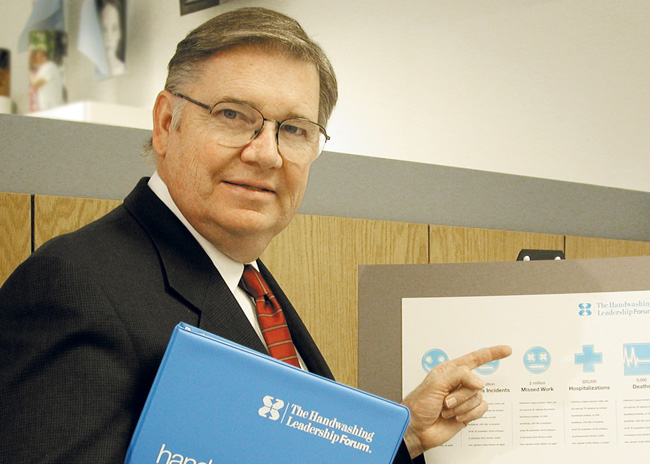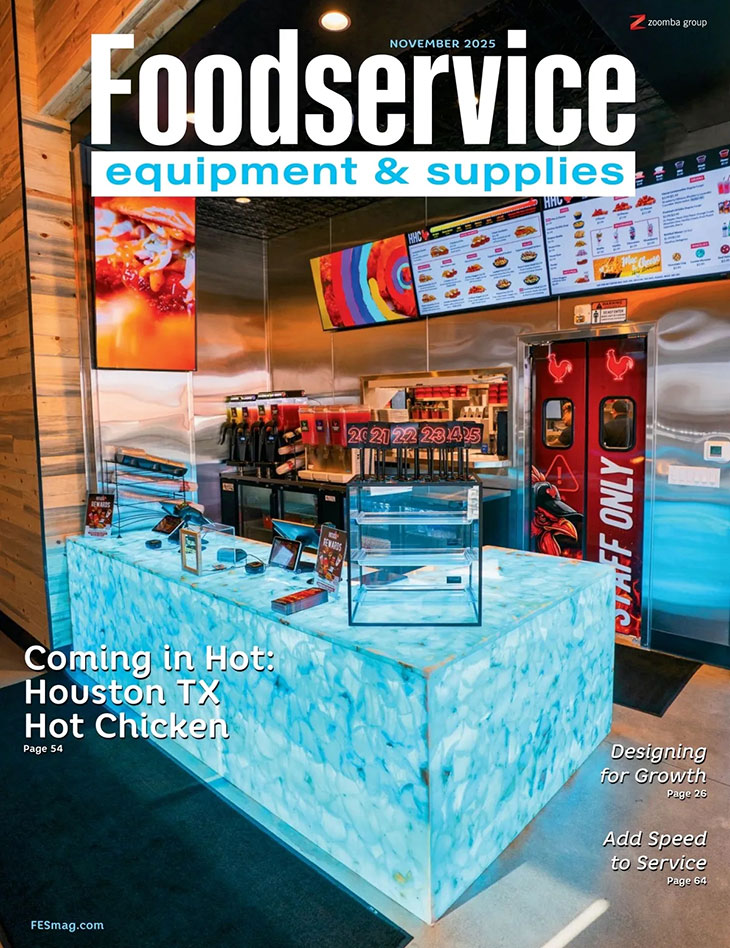The seeds for today’s Handwashing For Life advances were sown 25 years ago, when handwashing advocates gathered to address the need to enhance handwashing in the foodservice industry.
 Jim Mann, Handwashing For Life, Founder and Executive Director There was a consensus that an integrated approach could provide new options unachievable by a single technology. This was the beginning of the Handwashing For Life alliance, where members work together to replace risk with sustainable public health solutions.
Jim Mann, Handwashing For Life, Founder and Executive Director There was a consensus that an integrated approach could provide new options unachievable by a single technology. This was the beginning of the Handwashing For Life alliance, where members work together to replace risk with sustainable public health solutions.
“It’s about lowering the risk of foodborne illness for operators and the people they serve,” says Jim Mann, Handwashing For Life founder and executive director. “We have the protocols and evidence that proves hand sanitizer is an effective replacement for soap and water at temporary events, during water outages and other emergencies.” If hands could be cleaned closer to the point of contamination, he says, hand sinks wouldn’t be necessary. Here, Mann talks about making the most of non-sink handwashing.
Q: You have served as a spokesperson for handwashing since 1999. What strikes you as the most critical change or advancement over that period?
A: First, touch-free dispenser technology — water, soap, sanitizer and paper towels. Together, these make it easier for busy staff to do the right thing. Convenience helps control the process.
Second, alcohol-based hand sanitizers have been a significant complement to soap-water washing, but their use in restaurants in the U.S. has been minimized by regulatory barriers. This is shocking, considering the Centers for Disease Control and Prevention and the World Health Organization globally direct healthcare workers to use alcohol-based hand sanitizers as the gold standard for hand hygiene unless hands are visibly soiled. These two new protocols combine cleaning properties and pathogen killing to erase performance deficits.
These new processes, together with best-practice products, reduce operator risk. Their time-saving convenience drives added compliance.
Third, and with the biggest potential, is compliance data. The pioneering commercial systems died from lack of scalability and high cost. The new generation solves both issues.
Q: At one point, designs at food halls and other large spaces were starting to include handwashing stations for customers. Do you find this measure still growing?
A: These venues are going to love the new sink-free procedures. Plumbed hand sinks are expensive, take up valuable customer space, and can’t compete with the convenience and performance of these new methods.
Q: What has become more prevalent in the back of the house that supports handwashing, food safety, etc.?
A: The biggest thing we’ve found with our recent research is that sanitizer can be used effectively in more situations.
Many trivialize handwashing. C-suite executives rarely look to technology to solve “mundane” handwashing issues, but dispenser innovations will soon shift their mindset.
Q: Do you think sanitizer can replace hand sinks in some cases?
A: Yes. For example, this allows for redesign possibilities in prep lines. Imagine a prep line with a sanitizer dispenser every 5 feet; workers no longer run around with germ-laden hands, searching for an open sink.



